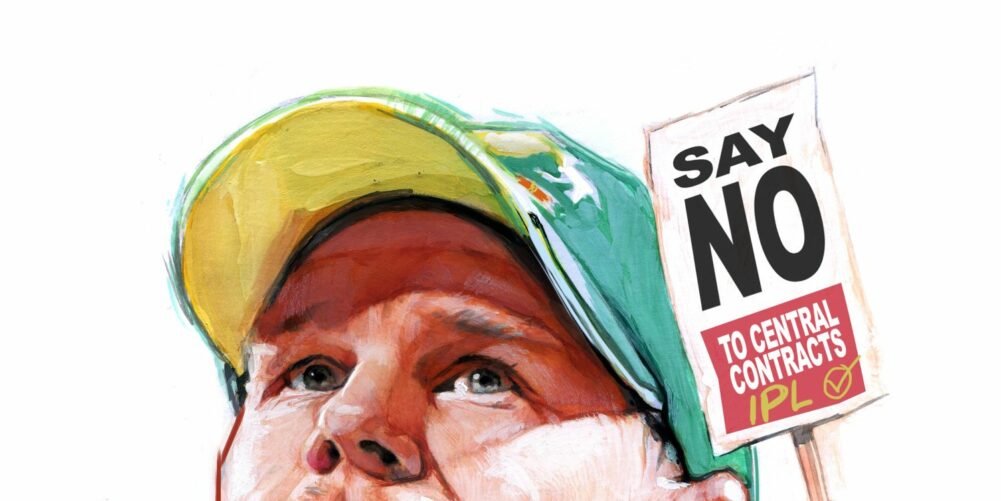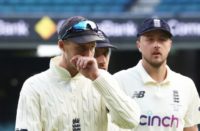One board believes that its fortunes in white-ball cricket lie with embedding players in the Indian Premier league, the other that the risk of burnout outweighs any short-term benefits and replaces them with longer-term risks to the national cause. But which one is right?
The first way, which you may now recognise, is the stance taken by Andrew Strauss, ECB’s director of England cricket. The second being the one now proposed by Cricket Australia.
Strauss was brought in to oversee and improve the national teams overall but with an extra emphasis on improving the men’s side’s white-ball cricket.
His first move in that regard was to appoint Trevor Bayliss, who had overseen one-day success with Sri Lanka, as England coach. His second was actively encouraging leading players to try out for the IPL, promising them a bigger window of opportunity that would appeal to franchise holders.
This was a marked change from previous regimes who had tried, through slightly more generous central contracts and by insisting contracted players rest or report back in mid-May, to minimise any exodus to the IPL.
The result of Strauss’s largesse meant that players were available for longer and, for the first time, every IPL franchise had an England player among its overseas contingent.
The benefits of playing IPL have long been extolled by those who receive the generous remuneration that it offers, though their testimony is compromised for obvious reasons.
Playing regularly is undoubtedly the key to improving as a player, something Ben Stokes and Chris Woakes have done in this year’s IPL, but not Jason Roy, Sam Billings, Tymal Mills or Eoin Morgan, England’s white-ball captain, who’ve scarcely got a game for their franchises, though Mills has been injured.
Those who saw Stokes score that incredible hundred to help his side, Rising Pune Supergiant, chase down a total of 161 that had looked beyond them when they were 10 for three, will just know that he will benefit from the experience, if only in raising his self-belief.
Even so, Strauss must have felt the odd pang of panic when Stokes started limping during that innings, a problem, luckily, that turned out to be cramp.
Before the qualifiers and eliminator, IPL teams play 14 games in 40 days, or roughly two to three a week. It doesn’t sound much but India is a large country and travel, even by charter plane, is not straightforward. For those who play internationals as well, like India’s captain Virat Kohli, the itinerary, after two big recent Test series, will have been draining.
Kohli, who captained much-fancied Royal Challengers Bangalore, looked a husk of his usual ebullient self, though he was let down badly by his overseas stars Chris Gayle and AB de Villiers, another two who looked worn out by cricket. Despite possessing the most formidable batting firepower in the tournament on paper, RCB finished bottom.
IPL is popular with the best cricketers because it mostly pays better than anything else they do, at least for overs played. They might give us some old blather about the excitement of playing in front of big, raucous crowds, but it is the pay cheque that motivates them and the reason why they will push themselves to the brink of exhaustion to secure it. There is a clear conflict of interests at play. The leading players are also valuable assets to their various boards, which is why Cricket Australia (CA) is now concerned that too much cricket could turn them into a diminishing resource should they suffer burnout.
To prevent that, and in the hope of preserving their best players for national duty, CA has offered their elite cricketers enhanced central contracts, providing they opt out of the IPL, something Mitchell Starc did voluntarily this year.
So far, and it comes in the middle of some feisty pay negotiations between them and the players anyway, the offer has been met with derision, with David Warner, Australia’s vice-captain but also captain of the Sunrisers Hyderabad IPL franchise, turning the offer down flat.
Warner’s militant mood has extended to him saying that he and other leading players would simply tour the world playing IPL tournaments if CA was to play hard ball and not offer them a contract. The situation has echoes of the one the ECB found itself in with Kevin Pietersen about five years ago when he was keen to play a full IPL, though Pietersen never issued such a veiled threat, at least not publicly.
You can understand why CA is trying to keep its elite players fresh for national duty. Australia remains a country where sporting excellence is still closely linked with national pride.
A strong Australian cricket team is almost vital for the well-being of the country. At present, a natural break in their international schedule coincides with the IPL, hence the move to persuade their leading cricketers to rest rather than chase the rupee.
CA’s stance on this may be at variance with the ECB’s one, yet it merely apes the one taken by the Board of Control for Cricket in India (BCCI).
It has never allowed its contracted stars to play in other T20 tournaments, including the Big Bash, which is why this looks as well like a bit of quid pro quo. BCCI pays its players extremely well though, which is why you never hear a dissenting peep about being denied opportunities to earn more.
And that is probably part of the problem. Warner and his fellow Aussies at the IPL have seen the enormous sums India’s top cricketers are earning (from their board) and feel that they are being short-changed by their own.
At the moment it is an antipodean problem but expect it to migrate north to England in the near future. Then, we will be better placed to judge the relative merits of Strauss’s decision to let England’s prize assets like Stokes and Woakes loose on the IPL.
This piece originally featured in The Cricket Paper, May 19 2017
Subscribe to the digital edition of The Cricket Paper here












